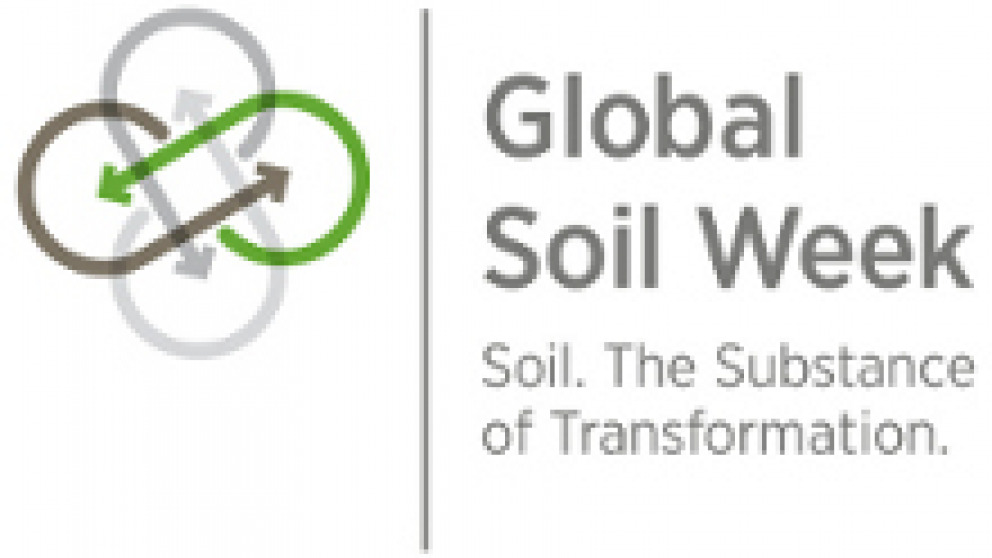Are the Sustainable Development Goals Sustainable? New Research Findings Presented at 3rd Global Soil Week
21.04.2015
Research on land and soils

The protection of soils and land is key to solving a range of today’s environmental, social and economic problems. At the third Global Soil Week this week, around 500 participants from 78 countries are discussing concrete options for putting a halt to continuing land degradation across the globe. The role of soil protection in the sustainable development goals (SDGs) is a particular focus of the event. In a joint press conference on Monday, 20 April, the IASS, UNEP’s International Resource Panel (IRP) and the International Institute for Applied Systems Analysis (IIASA) presented two studies that investigate the effectiveness and sustainability of the proposed 17 SDGs with regard to the huge and still growing demand for resources such as land and biomass. In their publication, Grounding the Post-2015 Development Agenda: Options for the Protection of our Precious Soil and Land Resources, which was discussed by GSW participants on Tuesday, the IASS and partners formulate concrete policy recommendations.

The IASS, the IRP and IIASA all concluded during the presentation of their studies on Monday that the huge demand for land and biomass implicit in the individual SDGs will affect the future availability of land and potentially impede the fulfilment of the goals. The land demands made in the SDGs exceed our existing land resources. The IIASA study examines the economic links, co-benefits, and trade-offs between the different SDG aims, particularly between land, food and water resources. Conservation efforts focused on one resource or region can drive prices up, leading to food insecurity and even greater exploitation of other resources. “The Competition for resources concerns all 17 of the SDGs,” warned Michael Obersteiner, Programme Director of Ecosystem Services and Management at IIASA. “Only a systems approach can help to reveal critical interdependencies and avoid zero-sum outcomes as nations craft policies to implement the goals,” he argued when presenting the IIASA study commissioned by the IRP.
Töpfer: SDGs make more land demands than we can possibly meet
Twelve of the proposed SDGs relate to the sustainable use of natural resources and several depend on the use of additional land resources, for example, the goals on food security (Goal 2), energy supply (Goal 7), production and consumption (Goal 12) and the sustainable use of ecosystems (Goal 15). IASS Executive Director Klaus Töpfer concluded: “The 17 SDGs are therefore not consistent. The demands for biomass and land that they make are far more than we can possibly meet. We need to set priorities, for example, where food security is concerned.” The IASS study emphasises the need to find democratic ways of balancing the demands implied by the SDGs during their implementation at national level. Consumers also have an important role to play. The choices we make are of great importance: not just our decisions on what to consume, but also our decision to buy food in such a way that it does not end up being wasted.
Ernst Ulrich von Weizsäcker, member and formerly co-chair of the IRP, said: “It is only natural that the ecological targets in the SDGs come up against brick walls, while the social and economic goals strive for more and more growth. It’s a huge conflict and thus a problem of distribution: our planet’s resources are finite, so the rich need to give away some of their wealth. Otherwise the current inequities will remain.” Mette Wilkie, director of UNEP’s Division of Environmental Policy and Implementation, concluded: “The two studies highlight the fact that business as usual is no longer an option. We need to change the way in which we manage and use our natural resources and move towards sustainable production and consumption patterns.”
How can the post-2015 Development Agenda be monitored?
The authors of Grounding the Post-2015 Development Agenda: Options for the Protection of our Precious Soil and Land Resources, which was presented at the Global Soil Week on Tuesday, describe options for monitoring and accountability with regard to the SDGs. They assert that land and soil resources underpin key services, such as the production of food, feed, fibre and fuel, carbon storage, nutrient cycling, the protection of biodiversity, and water regulation. They also propose global indicators to “capture a minimum of globally comparable information on soil and land.” At the same time, they argue that the follow-up and review of the post-2015 Development Agenda needs to go beyond merely reporting on indicators and recommend national multi-stakeholder initiatives for soil and land monitoring and accountability.
The proposals were developed by the IASS together with Biovision, the International Center for Tropical Agriculture, the European Environment Agency, the Global Forest Coalition, the Jacob Blaustein Institutes for Desert Research, the Millennium Institute, the German Federal Environment Agency, the United Nations Convention to Combat Desertification and other authors. They will be presented and discussed within the framework of the post-2015 Development Agenda process at a high-level event in New York on 12 and 13 May.
Links: